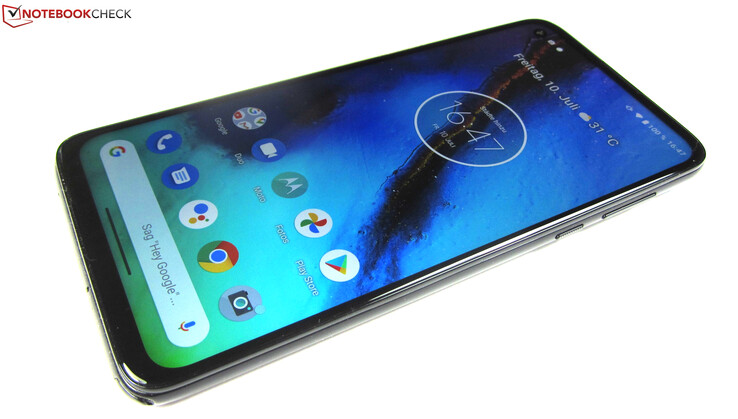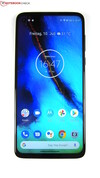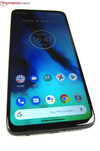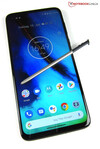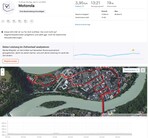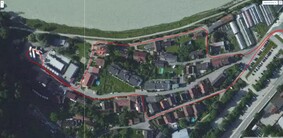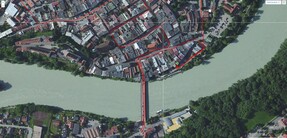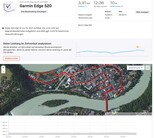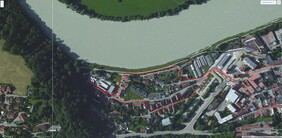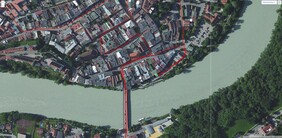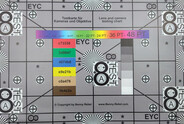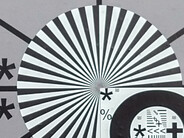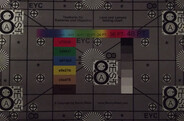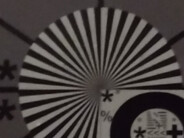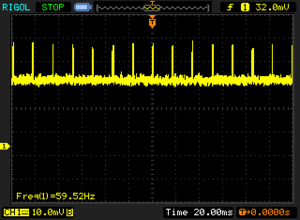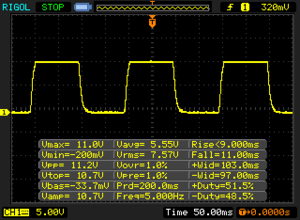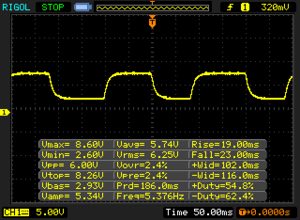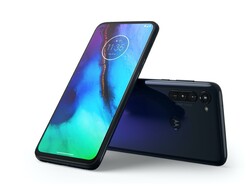Motorola Moto G Pro Smartphone rövid értékelés - Olcsó Tollas Okostelefon
Competing Devices
Értékelés | Dátum | Modell | Súly | Drive | Méret | Felbontás | Legjobb ár |
|---|---|---|---|---|---|---|---|
| 77.2 % v7 (old) | 09/2020 | Motorola Moto G Pro SD 665, Adreno 610 | 192 g | 128 GB eMMC Flash | 6.40" | 2300x1080 | |
| 79.3 % v7 (old) | 04/2020 | Xiaomi Redmi Note 8T SD 665, Adreno 610 | 200 g | 64 GB eMMC Flash | 6.30" | 2340x1080 | |
| 78.1 % v7 (old) | 06/2020 | Motorola Moto G8 Power SD 665, Adreno 610 | 197 g | 64 GB eMMC Flash | 6.40" | 2300x1080 | |
| 82.8 % v7 (old) | 02/2020 | Samsung Galaxy Note10 Lite Exynos 9810, Mali-G72 MP18 | 199 g | 128 GB UFS 2.1 Flash | 6.70" | 2400x1080 | |
| 80.3 % v6 (old) | 07/2018 | LG Q Stylus MT6750S, Mali-T860 MP2 | 172 g | 32 GB eMMC Flash | 6.20" | 2160x1080 |
» A Top 10 multimédiás noteszgép - tesztek alapján
» A Top 10 játékos noteszgép
» A Top 10 belépő szintű üzleti noteszgép
» A Top 10 üzleti noteszgép
» A Top 10 notebook munkaállomása
» A Top 10 okostelefon - tesztek alapján
» A Top 10 táblagép
» A Top 10 Windows tabletje
» A Top 10 subnotebook - tesztek alapján
» A Top 10 300 euró alatti okostelefonja
» A Top 10 120 euró alatti okostelefonja
» A Top 10 phabletje (>5.5-inch)
» A Top 10 noteszgép 500 EUR (~160.000 HUF) alatt
» A Top 10 "pehelysúlyú" gaming notebookja
Size Comparison
| Networking | |
| iperf3 transmit AX12 | |
| Samsung Galaxy Note10 Lite | |
| Motorola Moto G Pro | |
| Xiaomi Redmi Note 8T | |
| Motorola Moto G8 Power | |
| LG Q Stylus | |
| iperf3 receive AX12 | |
| Samsung Galaxy Note10 Lite | |
| Motorola Moto G Pro | |
| Xiaomi Redmi Note 8T | |
| LG Q Stylus | |
| Motorola Moto G8 Power | |
Kép összehasonlítás
Válasszon egy jelenetet, és navigáljon az első képen belül. Érintőképernyőkön egy kattintással megváltoztathatja a pozíciót. Egy kattintás a kinagyított képre megnyitja az eredetit egy új ablakban. Az első képen a tesztkészülék méretarányos fotója látható.
Daylight scene 1Daylight scene 2Low-light environment
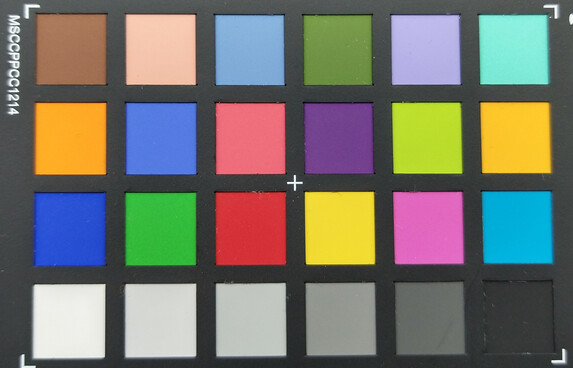
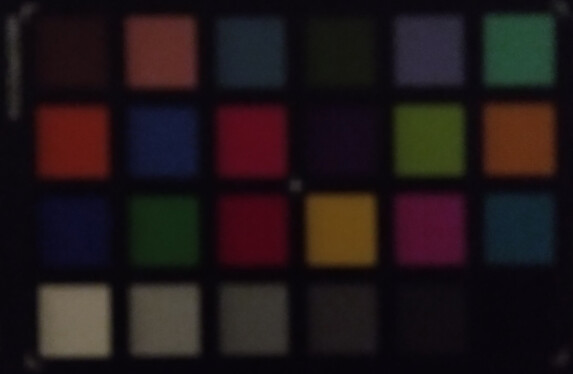
| |||||||||||||||||||||||||
Fényerő megoszlás: 97 %
Centrumban: 735 cd/m²
Kontraszt: 1470:1 (Fekete: 0.5 cd/m²)
ΔE ColorChecker Calman: 5.84 | ∀{0.5-29.43 Ø4.78}
ΔE Greyscale Calman: 5.9 | ∀{0.09-98 Ø5}
92.3% sRGB (Calman 2D)
Gamma: 2.342
CCT: 7897 K
| Motorola Moto G Pro IPS, 2300x1080, 6.4" | Xiaomi Redmi Note 8T IPS, 2340x1080, 6.3" | Motorola Moto G8 Power IPS, 2300x1080, 6.4" | Samsung Galaxy Note10 Lite AMOLED, 2400x1080, 6.7" | LG Q Stylus IPS, 2160x1080, 6.2" | |
|---|---|---|---|---|---|
| Screen | 11% | -19% | -16% | -7% | |
| Brightness middle (cd/m²) | 735 | 628 -15% | 462 -37% | 510 -31% | 458 -38% |
| Brightness (cd/m²) | 732 | 631 -14% | 483 -34% | 536 -27% | 441 -40% |
| Brightness Distribution (%) | 97 | 93 -4% | 93 -4% | 91 -6% | 94 -3% |
| Black Level * (cd/m²) | 0.5 | 0.54 -8% | 0.65 -30% | 0.51 -2% | |
| Contrast (:1) | 1470 | 1163 -21% | 711 -52% | 898 -39% | |
| Colorchecker dE 2000 * | 5.84 | 2 66% | 5.7 2% | 6.6 -13% | 4.5 23% |
| Colorchecker dE 2000 max. * | 10.2 | 5.1 50% | 8.9 13% | 17.56 -72% | 7.1 30% |
| Greyscale dE 2000 * | 5.9 | 3.7 37% | 6.5 -10% | 2.9 51% | 5.1 14% |
| Gamma | 2.342 94% | 2.17 101% | 2.303 96% | 2.242 98% | 2.33 94% |
| CCT | 7897 82% | 6230 104% | 8073 81% | 6989 93% | 7381 88% |
* ... a kisebb jobb
Képernyő villogása / PWM (impulzusszélesség-moduláció)
| Képernyő villogása / PWM észlelve | 59.5 Hz | ≤ 15 % fényerő beállítása | |
A kijelző háttérvilágítása 59.5 Hz-en villog (a legrosszabb esetben, pl. PWM használatával) Villódzás észlelve a 15 % vagy annál kisebb fényerő-beállításnál. E fényerő-beállítás felett nem lehet villogás vagy PWM. A 59.5 Hz frekvenciája nagyon alacsony, így a villogás hosszabb használat után szemfájdalmat és fejfájást okozhat. Összehasonlításképpen: az összes tesztelt eszköz 53 %-a nem használja a PWM-et a kijelző elsötétítésére. Ha PWM-et észleltek, akkor átlagosan 8108 (minimum: 5 - maximum: 343500) Hz-t mértek. | |||
Megjelenítési válaszidők
| ↔ Válaszidő Fekete-fehér | ||
|---|---|---|
| 20 ms ... emelkedés és süllyedés ↘ kombinálva | ↗ 9 ms emelkedés | |
| ↘ 11 ms ősz | ||
| A képernyő jó reakciósebességet mutat tesztjeinkben, de túl lassú lehet a versenyképes játékosok számára. Összehasonlításképpen, az összes tesztelt eszköz 0.1 (minimum) és 240 (maximum) ms között mozog. » 42 % of all devices are better. Ez azt jelenti, hogy a mért válaszidő hasonló az összes vizsgált eszköz átlagához (20.2 ms). | ||
| ↔ Válaszidő 50% szürke és 80% szürke között | ||
| 42 ms ... emelkedés és süllyedés ↘ kombinálva | ↗ 19 ms emelkedés | |
| ↘ 23 ms ősz | ||
| A képernyő lassú reakciósebességet mutat tesztjeinkben, és nem lesz kielégítő a játékosok számára. Összehasonlításképpen, az összes tesztelt eszköz 0.165 (minimum) és 636 (maximum) ms között mozog. » 66 % of all devices are better. Ez azt jelenti, hogy a mért válaszidő rosszabb, mint az összes vizsgált eszköz átlaga (31.6 ms). | ||
| AnTuTu v8 - Total Score (érték szerinti rendezés) | |
| Motorola Moto G Pro | |
| Motorola Moto G8 Power | |
| Samsung Galaxy Note10 Lite | |
| Átlagos Qualcomm Snapdragon 665 (167305 - 181432, n=9) | |
| Jetstream 2 - 2.0 Total Score | |
| Az osztály átlaga Smartphone (23.8 - 387, n=149, az elmúlt 2 évben) | |
| Samsung Galaxy Note10 Lite (Chrome 80) | |
| Motorola Moto G Pro (Chrome 83.0.4103.106) | |
| Átlagos Qualcomm Snapdragon 665 (22.9 - 31.2, n=6) | |
| JetStream 1.1 - Total Score | |
| Samsung Galaxy Note10 Lite (Chrome 80) | |
| Motorola Moto G Pro (Chrome 83.0.4103.106) | |
| Motorola Moto G8 Power (Chrome 80) | |
| Átlagos Qualcomm Snapdragon 665 (33.4 - 51, n=8) | |
| LG Q Stylus (hrome 69) | |
| Speedometer 2.0 - Result 2.0 | |
| Az osztály átlaga Smartphone (15.2 - 643, n=122, az elmúlt 2 évben) | |
| Samsung Galaxy Note10 Lite (Chome 80) | |
| Átlagos Qualcomm Snapdragon 665 (25.4 - 30.8, n=6) | |
| Motorola Moto G Pro (Chrome 83.0.4103.106) | |
| WebXPRT 3 - Overall | |
| Az osztály átlaga Smartphone (38 - 380, n=31, az elmúlt 2 évben) | |
| Samsung Galaxy Note10 Lite (Chrome 80) | |
| Motorola Moto G8 Power (Chrome 80) | |
| Motorola Moto G Pro (Chrome 83.0.4103.106) | |
| Átlagos Qualcomm Snapdragon 665 (38 - 58, n=9) | |
| LG Q Stylus (Chrome 69) | |
| Octane V2 - Total Score | |
| Az osztály átlaga Smartphone (2228 - 121337, n=197, az elmúlt 2 évben) | |
| Samsung Galaxy Note10 Lite (Chrome 80) | |
| Motorola Moto G Pro (Chrome 83.0.4103.106) | |
| Átlagos Qualcomm Snapdragon 665 (6133 - 9671, n=9) | |
| Motorola Moto G8 Power (Chrome 80) | |
| LG Q Stylus (hrome 69) | |
| Mozilla Kraken 1.1 - Total | |
| LG Q Stylus (hrome 69) | |
| Átlagos Qualcomm Snapdragon 665 (4434 - 6719, n=9) | |
| Motorola Moto G8 Power (Chrome 80) | |
| Motorola Moto G Pro (Chrome 83.0.4103.106) | |
| Samsung Galaxy Note10 Lite (Chrome 80) | |
| Az osztály átlaga Smartphone (257 - 28190, n=153, az elmúlt 2 évben) | |
* ... a kisebb jobb
| Motorola Moto G Pro | Xiaomi Redmi Note 8T | Motorola Moto G8 Power | Samsung Galaxy Note10 Lite | LG Q Stylus | Átlagos 128 GB eMMC Flash | Az osztály átlaga Smartphone | |
|---|---|---|---|---|---|---|---|
| AndroBench 3-5 | 2% | 0% | 52% | -30% | -0% | 491% | |
| Sequential Read 256KB (MB/s) | 294.1 | 315.8 7% | 300.9 2% | 777 164% | 241.7 -18% | 300 ? 2% | 2217 ? 654% |
| Sequential Write 256KB (MB/s) | 233.6 | 173.9 -26% | 181.9 -22% | 190.8 -18% | 121.4 -48% | 195.1 ? -16% | 1840 ? 688% |
| Random Read 4KB (MB/s) | 65.5 | 90.4 38% | 57.7 -12% | 132 102% | 31.45 -52% | 85.9 ? 31% | 294 ? 349% |
| Random Write 4KB (MB/s) | 89.4 | 91.2 2% | 132.6 48% | 142 59% | 12.07 -86% | 58.1 ? -35% | 334 ? 274% |
| Sequential Read 256KB SDCard (MB/s) | 73.4 ? | 71.6 ? -2% | 69.4 ? -5% | 73.5 ? 0% | 83.1 ? 13% | 78.1 ? 6% | |
| Sequential Write 256KB SDCard (MB/s) | 55.9 ? | 52.8 ? -6% | 49.7 ? -11% | 59.8 ? 7% | 63.5 ? 14% | 61.8 ? 11% |
(±) A felső oldalon a maximális hőmérséklet 43.9 °C / 111 F, összehasonlítva a 35.2 °C / 95 F átlagával , 21.9 és 247 °C között a Smartphone osztálynál.
(±) Az alsó maximum 44.1 °C / 111 F-ig melegszik fel, összehasonlítva a 34 °C / 93 F átlagával
(+) Üresjáratban a felső oldal átlagos hőmérséklete 27.7 °C / 82 F, összehasonlítva a 32.9 °C / ### eszközátlaggal class_avg_f### F.
Motorola Moto G Pro hangelemzés
(±) | a hangszóró hangereje átlagos, de jó (81.9 dB)
Basszus 100 - 315 Hz
(-) | szinte nincs basszus – átlagosan 67.2%-kal alacsonyabb a mediánnál
(+) | a basszus lineáris (0% delta az előző frekvenciához)
Közepes 400-2000 Hz
(-) | szinte nincs középérték – átlagosan 67.2%-kal alacsonyabb a mediánnál
(+) | a középpontok lineárisak (0% delta az előző frekvenciához)
Maximum 2-16 kHz
(-) | szinte nincs csúcs – átlagosan 67.2%-kal alacsonyabb a mediánnál
(+) | a csúcsok lineárisak (0% delta az előző frekvenciához képest)
Összességében 100 - 16.000 Hz
(-) | az összhang nem lineáris (118.9% eltérés a mediánhoz képest)
Ugyanazon osztályhoz képest
» 88%Ebben az osztályban az összes tesztelt eszköz %-a jobb volt, 8% hasonló, 4%-kal rosszabb
» A legjobb delta értéke 11%, az átlag 35%, a legrosszabb 134% volt
Az összes tesztelt eszközzel összehasonlítva
» 96% az összes tesztelt eszköz jobb volt, 2% hasonló, 1%-kal rosszabb
» A legjobb delta értéke 4%, az átlag 24%, a legrosszabb 134% volt
Motorola Moto G8 Power hangelemzés
(+) | a hangszórók viszonylag hangosan tudnak játszani (85.1 dB)
Basszus 100 - 315 Hz
(-) | szinte nincs basszus – átlagosan 73.8%-kal alacsonyabb a mediánnál
(+) | a basszus lineáris (0% delta az előző frekvenciához)
Közepes 400-2000 Hz
(-) | szinte nincs középérték – átlagosan 73.8%-kal alacsonyabb a mediánnál
(+) | a középpontok lineárisak (0% delta az előző frekvenciához)
Maximum 2-16 kHz
(-) | szinte nincs csúcs – átlagosan 73.8%-kal alacsonyabb a mediánnál
(+) | a csúcsok lineárisak (0% delta az előző frekvenciához képest)
Összességében 100 - 16.000 Hz
(-) | az összhang nem lineáris (125.7% eltérés a mediánhoz képest)
Ugyanazon osztályhoz képest
» 96%Ebben az osztályban az összes tesztelt eszköz %-a jobb volt, 3% hasonló, 1%-kal rosszabb
» A legjobb delta értéke 11%, az átlag 35%, a legrosszabb 134% volt
Az összes tesztelt eszközzel összehasonlítva
» 99% az összes tesztelt eszköz jobb volt, 1% hasonló, 0%-kal rosszabb
» A legjobb delta értéke 4%, az átlag 24%, a legrosszabb 134% volt
| Kikapcsolt állapot / Készenlét | |
| Üresjárat | |
| Terhelés |
|
Kulcs:
min: | |
| Motorola Moto G Pro 4000 mAh | Xiaomi Redmi Note 8T 4000 mAh | Motorola Moto G8 Power 5000 mAh | Samsung Galaxy Note10 Lite 4500 mAh | LG Q Stylus 3300 mAh | Átlagos Qualcomm Snapdragon 665 | Az osztály átlaga Smartphone | |
|---|---|---|---|---|---|---|---|
| Power Consumption | 30% | 30% | -9% | 34% | 17% | -1% | |
| Idle Minimum * (Watt) | 1.6 | 0.62 61% | 0.9 44% | 0.9 44% | 0.69 57% | 1.017 ? 36% | 0.842 ? 47% |
| Idle Average * (Watt) | 2.3 | 1.77 23% | 1.3 43% | 1.6 30% | 1.7 26% | 1.893 ? 18% | 1.439 ? 37% |
| Idle Maximum * (Watt) | 2.8 | 1.8 36% | 1.6 43% | 1.9 32% | 1.73 38% | 2.36 ? 16% | 1.624 ? 42% |
| Load Average * (Watt) | 4.2 | 3.42 19% | 3.2 24% | 8.4 -100% | 3.21 24% | 3.77 ? 10% | 7.03 ? -67% |
| Load Maximum * (Watt) | 6.9 | 6.14 11% | 7.1 -3% | 10.3 -49% | 5.31 23% | 6.66 ? 3% | 11.3 ? -64% |
* ... a kisebb jobb
| Motorola Moto G Pro 4000 mAh | Xiaomi Redmi Note 8T 4000 mAh | Motorola Moto G8 Power 5000 mAh | Samsung Galaxy Note10 Lite 4500 mAh | LG Q Stylus 3300 mAh | |
|---|---|---|---|---|---|
| Akkumulátor üzemidő | -4% | 27% | 6% | -39% | |
| Reader / Idle (h) | 40.8 | 36.8 -10% | 25.5 -37% | ||
| H.264 (h) | 14.7 | 17.9 22% | 8.8 -40% | ||
| WiFi v1.3 (h) | 13.2 | 12.7 -4% | 16.7 27% | 15.1 14% | 7 -47% |
| Load (h) | 4.8 | 4.6 -4% | 3.3 -31% |
Pro
Kontra
Összegzés - A Motorola Moto G Pro-t Nem Lehet Figyelmen Kívül Hagyni
Egy olcsó okostelefon érintőceruzával - a Moto G Pro-val a Motorola megtalálta a helyét, és kiadott egy olyan készüléket, amely a Samsung's Galaxy Note sorozat komoly versenytársa lehet.
330 euróért a vásárlók kapnak egy jól felszerelt középkategóriás okostelefont érintőceruzával, amely, bár nem képes olyan pontosságra, mint a Samsung, de a mindennapi használatra megfelelő.
Aki egy olcsó, érintőceruzás okostelefont keres, annak feltétlenül érdemes megfontolni a Motorola Moto G Pro-t.
Egyetlen panaszunk az érintőceruzát illetően a telefon nevéhez fűződik - a „Moto G Pro” semmilyen módon nem utal arra, hogy az okostelefon felhasználói élvezhetik azokat az előnyöket, amelyeket az érintőceruzás bementek nyújthatnak. Habár, érdekes módon, a Moto G Pro amerikai verzióját „Moto G Stylus”-nak hívják, de funkciók terén rosszabb: Nincs sem dual SIM, sem NFC támogatás, és a 18 wattos töltő helyett csak egy 10 wattos modellel jön.
Visszatérve a Moto G Pro-hoz: Az érintőceruzáján és egyéb említett előnyökön kívül a felhasználói élmény tovább fokozódik olyan funkciókkal, mint a Dolby hangszórók, világos IPS kijelző, jó kamera is gyors Wi-Fi. Android One készülékként garantáltan fog szoftverfrissítéseket kapni az elkövetkező két évben.
Motorola Moto G Pro
- 07/14/2020 v7 (old)
Manuel Masiero




